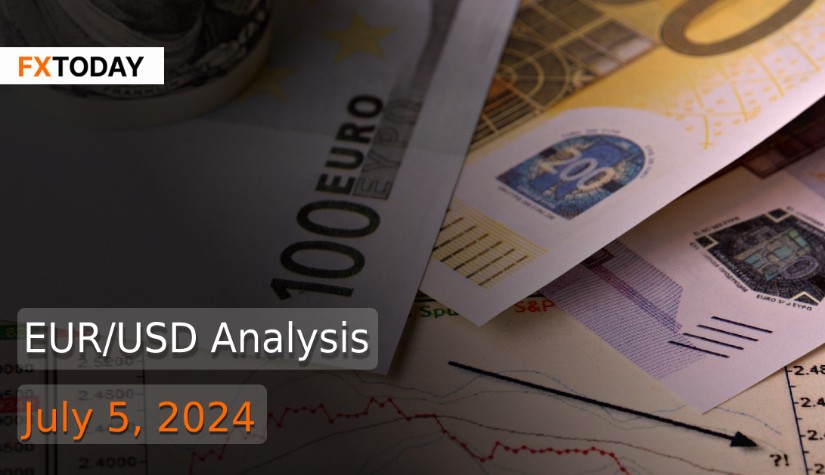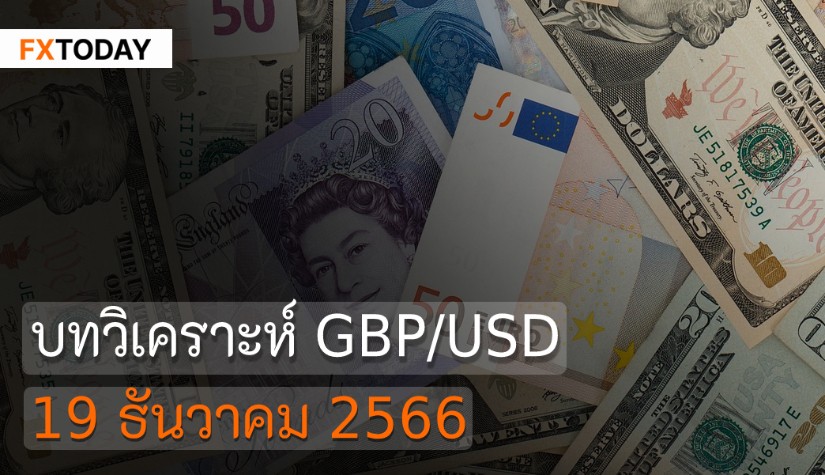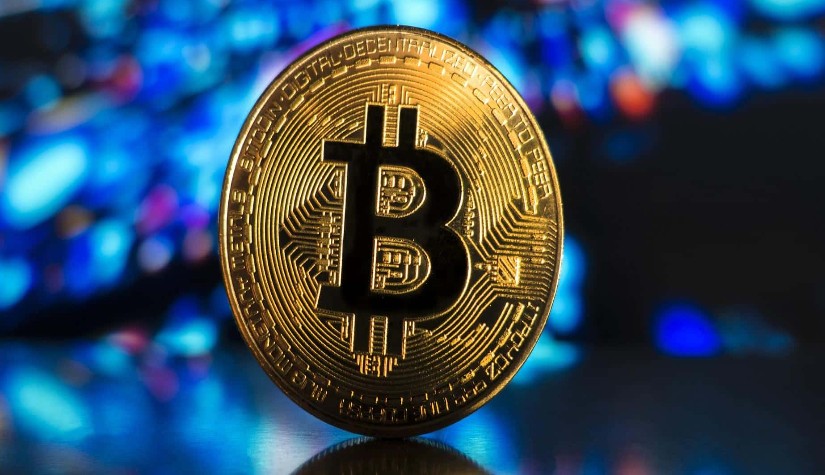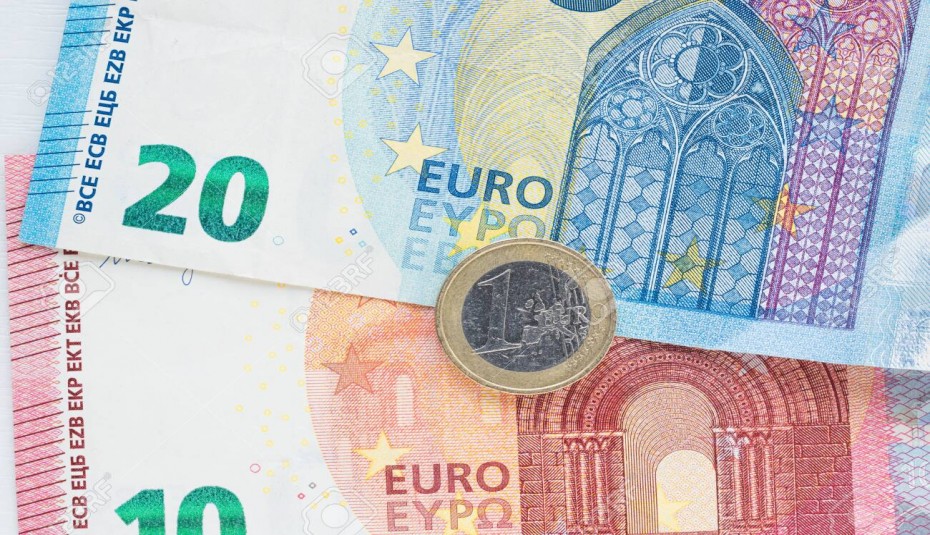Dollar Slips as Weak Economic Data; Euro Faces Political Uncertainties
EUR/USD increased slightly, with the euro benefiting from a weaker dollar. However, the euro might struggle to maintain these gains due to regional political uncertainties. The euro has declined over 1% since French President Macron called for a snap election, adding to the uncertainty ahead of the upcoming run-off election.
Slovenia's central bank governor, Bostjan Vasle, advised caution in cutting interest rates, citing potential risks to eurozone disinflation. The ECB emphasized patience at a recent forum, indicating no immediate pressure for further rate cuts despite slow disinflation and bond market volatility.
The ECB cut rates on June 6 but made no promises about future cuts, with the July 18 meeting unlikely to see changes. Despite wage growth surprising on the upside, concerns about stickier-than-expected inflation persisted. However, confidence remains that inflation will drop to the 2% target by the end of 2025. The ECB's wage tracker and corporate feedback indicate cooling wage pressures, supporting the expectation that inflation will decline. Investors anticipate 43 basis points of rate cuts this year and 110 basis points by 2025.
Eurozone inflation eased to 2.5% in June, but core inflation remained steady at 2.9%, driven by high services prices. Labour shortages and rapid wage growth in services could sustain high price pressures, keeping inflation above target. Unemployment in the eurozone remained at a record high of 6.4% in May, highlighting labour market tightness.
Manufacturing activity worsened as demand fell, even with price cuts by factories. Household savings in the eurozone rose to a three-year high of 15.3% in the first quarter of 2024, while investments fell to their lowest since early 2021. This increase in savings, possibly due to economic uncertainties, contrasts with the decline in household investments. Overall business growth slowed in the eurozone, with services expansion failing to offset manufacturing declines.
German inflation decreased more than anticipated in June, resuming its downward trend after two months of increases. A survey by the Ifo institute indicated that fewer German companies plan to raise prices compared to the previous month.
Unexpectedly, German industrial orders fell by 1.6% in May, marking the fifth consecutive monthly decline, suggesting a continued struggle for the manufacturing sector. The three-month comparison showed a 6.2% decline in orders from March to May. PMI data for June confirmed the ongoing downturn in manufacturing, and Ifo's business climate index revealed a pessimistic outlook among manufacturers.
The German economy ministry noted that the continuous decline in orders and deteriorating business expectations indicate a sluggish industrial economy. They suggested that orders might only stabilize with a recovery in global trade and increased demand for industrial products.
While the German service sector saw a solid rise in business activity in June, ending a positive second quarter, the rate of expansion slowed. Growth in new business and employment also slowed, with firms' expectations for the coming year dropping to a five-month low. Business costs rose at the slowest rate since March 2021, but wage pressures kept cost pressures high by historical standards.
Unemployment in Germany increased in June, more than expected. German consumer sentiment is set to fall slightly in July, as households, facing higher prices and a slow economic recovery, opt to save money. The consumer sentiment index fell in June, contrary to analysts' expectations of a rise. This drop joins other indicators, such as the Ifo business climate index and HCOB composite PMI, pointing to challenges ahead for Germany's economy.
The dollar's slide followed softer-than-expected ADP employment figures and a weak PMI reading for non-manufacturing activity, suggesting a cooling U.S. economy that could prompt Fed rate cuts. The Federal Reserve's latest meeting minutes showed policymakers noting diminishing inflationary pressures but wanting more evidence of sustained cooling before cutting rates. The CME Fedwatch tool indicated a nearly 66% chance of a September rate cut, up from 59% the day before.
U.S. services sector activity hit a four-year low in June due to a sharp drop in orders, indicating potential economic slowdown at the quarter's end. Despite weaker manufacturing activity, other data, like consumer spending, suggested moderate growth, as the economy adjusts to higher interest rates.
In June, U.S. private payrolls increased, slightly below expectations and indicating slowing labor market momentum. The ADP report precedes the Labor Department's more comprehensive employment report, which is expected to show 160,000 private-sector jobs added in June, down from 229,000 in May, with the unemployment rate holding at 4.0%.
Despite fewer-than-expected job gains, hiring in the leisure and hospitality industries remained strong, offsetting declines in information, education, and health services. Investors are closely monitoring job market data, including the nonfarm payrolls report, for signs of slowing labor demand, which could ease inflationary pressures and support potential Fed rate cuts later this year.
Data for Technical Analysis (5Min) CFD EUR/USD
Resistance : 1.0824, 1.0825, 1.0827
Support : 1.0820, 1.0819, 1.0817
5Min Outlook
Source: TradingView
Buy/Long 1 If the support at the price range 1.0819 - 1.0820 is touched, but the support at 1.0820 cannot be broken, the TP may be set around 1.0825 and the SL around 1.0818, or up to the risk appetite.
Buy/Long 2 If the resistance can be broken at the price range of 1.0824 - 1.0825, TP may be set around 1.0830 and SL around 1.0819, or up to the risk appetite.
Sell/Short 1 If the resistance at the price range 1.0824 - 1.0825 is touched, but the resistance at 1.0824 cannot be broken, the TP may be set around 1.0820 and the SL around 1.0826, or up to the risk appetite.
Sell/Short 2 If the support can be broken at the price range of 1.0819 - 1.0820, TP may be set around 1.0815 and SL around 1.0825, or up to the risk appetite.
Pivot Points Jul 5, 2024 03:29AM GMT
|
Name
|
S3
|
S2
|
S1
|
Pivot Points
|
R1
|
R2
|
R3
|
|---|---|---|---|---|---|---|---|
| Classic | 1.0815 | 1.0817 | 1.082 | 1.0822 | 1.0825 | 1.0827 | 1.083 |
| Fibonacci | 1.0817 | 1.0819 | 1.082 | 1.0822 | 1.0824 | 1.0825 | 1.0827 |
| Camarilla | 1.0822 | 1.0822 | 1.0823 | 1.0822 | 1.0823 | 1.0824 | 1.0824 |
| Woodie's | 1.0815 | 1.0817 | 1.082 | 1.0822 | 1.0825 | 1.0827 | 1.083 |
| DeMark's | - | - | 1.0821 | 1.0822 | 1.0826 | - | - |
Sources: Investing 1, Investing 2
















